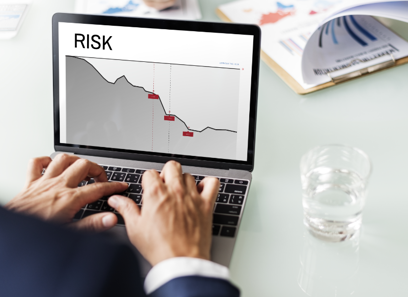Work with a trusted cybersecurity and privacy advisory firm to secure your data.
Work with a trusted cybersecurity and privacy advisory firm to secure your data.
Blog Article
The Following Frontier: Insightful Cybersecurity Predictions for the Coming Year
As we come close to the new year, the cybersecurity landscape gets on the brink of remarkable improvement. Key elements such as the integration of sophisticated AI technologies, the unpreventable rise of innovative ransomware, and the tightening up of information privacy laws are shaping the future of electronic safety and security. The recurring occurrence of remote job continues to subject new vulnerabilities that organizations must navigate. Recognizing these dynamics is crucial for anticipating the obstacles ahead and purposefully fortifying defenses, yet the ramifications of these adjustments remain to be completely discovered.
Rise of AI in Cybersecurity
In the quickly advancing landscape of cybersecurity, the assimilation of expert system (AI) is becoming an essential pressure in improving danger discovery and response capabilities. AI modern technologies, such as artificial intelligence algorithms and deep knowing designs, are being increasingly deployed to examine vast quantities of information and determine patterns a measure of safety hazards. cybersecurity and privacy advisory. This allows companies to proactively attend to susceptabilities prior to they can be made use of
The rise of AI in cybersecurity is particularly significant in its capability to automate routine jobs, permitting human experts to concentrate on even more intricate safety and security problems. By leveraging AI, cybersecurity teams can lower feedback times and boost the accuracy of threat analyses. AI systems can adjust and discover from new hazards, constantly improving their discovery systems to stay in advance of malicious stars.
As cyber risks come to be a lot more advanced, the demand for innovative services will certainly drive additional financial investment in AI modern technologies. This trend will likely bring about the advancement of enhanced protection tools that include predictive analytics and real-time monitoring, ultimately strengthening organizational defenses. The shift in the direction of AI-powered cybersecurity services stands for not just a technical change however a basic change in exactly how companies approach their safety and security strategies.
Boost in Ransomware Strikes
Ransomware attacks have come to be a prevalent danger in the cybersecurity landscape, targeting companies of all sizes and throughout different markets. As we progress right into the coming year, it is expected that these attacks will not only raise in frequency but also in refinement. Cybercriminals are leveraging innovative strategies, including the usage of artificial intelligence and device understanding, to bypass traditional safety and security procedures and manipulate susceptabilities within systems.
The escalation of ransomware attacks can be credited to a number of variables, including the rise of remote work and the growing dependence on electronic solutions. Organizations are often unprepared for the progressing hazard landscape, leaving crucial facilities at risk to violations. The financial effects of ransomware are staggering, with business encountering hefty ransom money needs and possible long-term operational disruptions.
Additionally, the fad of double extortion-- where opponents not just encrypt data however additionally threaten to leak delicate info-- has actually gained traction, further persuading targets to abide with needs. Therefore, businesses must focus on durable cybersecurity procedures, including regular backups, staff member training, and case action planning, to mitigate the risks connected with ransomware. Failure to do so can bring about ruining effects in the year in advance.
Development of Data Privacy Rules
The landscape of information personal privacy policies is undergoing significant transformation as governments and organizations react to the increasing concerns bordering personal information defense. Over the last few years, the application of extensive frameworks, such as the General Information Protection Regulation (GDPR) in Europe and the California Customer Privacy Act (CCPA) in the USA, has actually established a criterion for stricter privacy laws. These regulations stress customers' rights to manage their data, mandating openness and liability from organizations that gather and refine individual details.

In addition, companies will require to improve their conformity methods, purchasing sophisticated modern technologies and training to protect delicate information. The advancement of data personal privacy policies will certainly not only influence how services operate however also shape customer visit this website assumptions, cultivating a society of count on and safety and security in the digital landscape.
Development of Remote Work Vulnerabilities
As companies remain to accept remote work, vulnerabilities in cybersecurity have actually significantly pertained to the forefront. The shift to flexible work arrangements has exposed important voids in security procedures, particularly as staff members gain access to sensitive data from varied areas and devices. This decentralized job environment creates a broadened attack surface for cybercriminals, who exploit unprotected Wi-Fi networks and personal devices to penetrate business systems.

To alleviate these susceptabilities, organizations should focus on thorough cybersecurity training and execute durable safety frameworks that incorporate remote job situations. This includes multi-factor verification, regular system updates, and the establishment of clear methods for information gain access to and sharing. By resolving these vulnerabilities head-on, companies can cultivate a safer remote job environment while keeping operational durability in the face of evolving cyber hazards.
Innovations in Risk Discovery Technologies


Aggressive threat detection has actually come to be a cornerstone of contemporary cybersecurity techniques, mirroring the immediate need to neutralize increasingly innovative cyber threats. As organizations encounter a developing landscape of more susceptabilities, innovations in risk discovery modern technologies are important in mitigating risks and improving safety and security postures.
One significant trend is the integration of expert system and device knowing right into threat discovery systems. These modern technologies allow the analysis of huge quantities of information in real time, enabling the recognition of abnormalities and possibly malicious tasks that might avert conventional protection procedures. In addition, behavioral analytics are being applied to establish baselines for typical customer task, making it easier to detect deviations a sign of a breach.
Moreover, the rise of automated risk knowledge sharing systems promotes collaborative defense initiatives across industries. This real-time exchange of information enhances situational recognition and accelerates feedback times to arising hazards.
As companies remain to purchase these sophisticated modern technologies, the efficiency of cyber protection mechanisms will substantially improve, empowering protection teams to stay one action ahead of cybercriminals. Eventually, these developments will certainly play a crucial role fit the future landscape of cybersecurity.
Final Thought
In recap, the upcoming year is anticipated to witness transformative growths in cybersecurity, driven by the integration of AI modern technologies and a notable rise in ransomware attacks. On the whole, these evolving characteristics emphasize the essential value of adapting to an ever-changing cybersecurity landscape.
Report this page